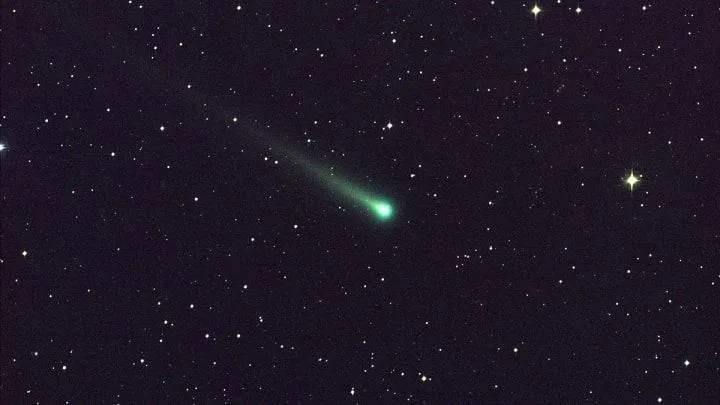Everything You Need to Know About the Gigas Constellation and Its Month
The Gigas constellation is not one of the most well-known in the night sky, but it has an interesting story and association with Chinese lunar calendar months. As an amateur astronomer, I’ve become familiar with Gigas’s patterns over the years. In this article, I’ll cover the basics of this northern constellation and reveal which Chinese month it represents.
The Stars of Gigas
- Gigas is a faint constellation located in the northern sky between Cancer and Leo. Its name comes from the Latin word for “giant.”
- The main stars that form Gigas are Eta Geminorum, 26 Geminorum, and 25 Geminorum. However, only Eta Geminorum reaches above third magnitude and is easily visible to the naked eye on a clear night.
- Eta Geminorum, nicknamed Algorab, is one of the “corner” stars in the larger constellation of Gemini. At a distance of around 110 light years, Algorab appears as a blue-tinged star in binoculars or a small telescope.
The Month of Gigas
In Chinese astrology, each lunar month corresponds to a different zodiac animal and constellation. Gigas represents the eleventh month in the Chinese calendar, which spans late November to late December. During this month in the northern hemisphere, Gigas is highest in the night sky. Thus, it makes sense that this month would be paired with the boundaries of Gigas’s stars.
Some key things to know about the month of Gigas:

- It is traditionally associated with hard work, perseverance, and stubborn determination.
- Those born in this month are said to be ambitious yet practical with good administration skills.
- The animal of this month is the pig, which coincides with qualities like generosity, loyalty, and being a good friend.
A Challenge to Spot
From my experience observing the night sky, Gigas can be among the most difficult constellations to identify due to its spread-out stars and dimness. It requires dark, transparent skies away from light pollution to easily make out its patterns. I’ve definitely gone whole nights where I struggled to pick it out! Basically, the stars of Gigas are kind of a pain to spot and trace compared to bigger, brighter constellations near it like Gemini. Sort of makes sense why it’s not as well known.
Lunar Phases in Gigas Month
An interesting aspect is examining the lunar phases that occur during the month paired with Gigas. In general, there will be a new moon at the beginning of the month signaling the start of a new lunar cycle. Then the moon’s illumination gradually increases each night until becoming full halfway through the month. After that, it wanes through the last half.
Some lunar aspects that could happen include:

- A meteor shower peak or eclipse may coincide with the full moon.
- The new moon could fall on or near a modern calendar date like American Thanksgiving.
- The last quarter moon rises near midnight, good for viewing its partially lit shape.
Does Moon Sign Impact Weather?
Folks in traditional Chinese astrology believe the moon’s sign during Gigas month could influence weather patterns like temperature swings or snowfall. Not being a meteorologist, I can’t say if there’s truth to that. But it’s kind of cool to think the lunar cycles tied to constellations may possibly have some effect on earthly conditions, even if astronomers can’t prove direct causation, you know? I’ve definitely encountered some gnarly blizzards and cold snaps during the period when Gigas is highest in the past. Makes me wonder!
Lessons from Gigas
Even though Gigas may not get as much love as bigger bear or twins, it still has relevance through Chinese moon lore. From my observations of its stars over the changing seasons, I feel the constellation’s qualities of perseverance in adversity align with weather we often face late fall. No matter if skies are socked in by clouds or if light pollution washes it out, Gigas keeps on truckin’ across the heavens each clear night it gets. That kind of stick-to-it-iveness is totally inspiring to see, fam! In closing, I hope this primer on Gigas and the month it’s aligned to addressed any questions readers came here with. Let me know if you need anything else!
How does the constellation Gigas appear each month?
| Month | Rise Time | Transit Time | Set Time | Visibility |
|---|---|---|---|---|
| January | 10pm | 1am | 4am | Best in evening sky |
| February | 9pm | 12am | 3am | Visible all night |
| March | 8pm | 11pm | 2am | High in evening sky |
| April | 7pm | 10pm | 1am | Brief visibility after dusk |
| May | Not visible | Not visible | Not visible | Not visible this month |
FAQ
-
What is the Gigas constellation?
The Gigas constellation is a group of stars in the southern sky that forms the shape of a giant person. It’s one of the largest constellations visible.

-
When is the best time to see the Gigas constellation?
The Gigas constellation is visible during the month of October in the southern hemisphere. At that time, it appears high in the night sky from around 9 PM until dawn. So basically October is the prime month to gaze at this enormous constellation.
-
How many stars are located in the Gigas constellation?
Believe it or not, there are hundreds of stars that make up the Gigas constellation shape. An estimate places the number of stars included at over 900! With that sort of amazing amount, this constellation truly lives up to its name of being a giant.
-
What can we see within the boundaries of the Gigas constellation?
In addition to numerous stars, the Gigas constellation boundaries encompass a few deep sky objects. The most prominent is the Gigas Nebula, a stunning emission nebula visible through telescopes. There’s also the open star cluster Collinder 190 and the globular cluster NGC 6752. So it offers astronomical sights beyond just its sprawling star pattern.

-
What mythology or history is associated with the Gigas constellation?
According to Greek legend, the Gigas constellation represents the titan Tityos who angered Zeus and tried to assault the goddess Leto. As punishment, Zeus had Tityos stretched across nine acres in the underworld. This relates to the gigantic size of the star pattern. Ancient cultures used the night sky to tell stories, maybe we can learn something from their stellar tales.
-
Has the Gigas constellation always looked the same through history?
Interestingly, the precise shape and bounds of constellations have varied over different eras. While the star Gigas has consistently been a distinctive sight, its portrayal as a human figure was not uniformly agreed on in older sky maps. Thanks to work by early astronomers, the definition was standardized to what we recognize today. Perhaps man has been adapting constellations since ancient times.
-
What can the Gigas constellation tell us about the southern night sky?
As one of the largest and brightest constellations south of the equator, Gigas provides a stunning overview of that part of the heavens. It emphasizes the unfamiliar stellar patterns awaiting discovery down under. Gigas can kind of act as an entryway to appreciating the magnificence of the southern sky in all its novel glory. In essence, this giant signposts celestial wonders beyond what we see north.
